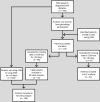A Pragmatic Rethinking of Glucose Monitoring for the Incarcerated
- PMID: 39157785
- PMCID: PMC11327170
- DOI: 10.2337/ds23-0036
A Pragmatic Rethinking of Glucose Monitoring for the Incarcerated
Abstract
Objective: Using continuous glucose monitoring (CGM) improves diabetes-related outcomes in the community, yet the fingerstick blood glucose monitoring (BGM) method is the norm in prisons. The purpose of this study was to investigate the safety and patient perceptions of CGM in the carceral environment, quantify changes in A1C after initiating CGM, and investigate rates of emergency department (ED) visits for diabetes-related complications comparing CGM users to patients using BGM.
Study design: This pragmatic longitudinal analysis was conducted in two parts. A pilot program was carried out at a single women's prison. A CGM program was initiated at men's facilities within a single U.S. state, where A1C change and ED visit rates were investigated.
Methods: Interested patients at an appropriate security level were invited to use CGM. Pre- and post-CGM surveys of glucose monitoring perceptions were administered during the pilot program. Security and perceptions were analyzed descriptively. A1C change was assessed using a t test. Fisher exact test, Barnard exact test, and post hoc power analysis were applied to ED visits.
Results: Security was not disrupted. Patient perceptions of glucose monitoring improved with CGM use (n = 6). A1C declined by 0.60% with a medium effect size (Cohen d -0.45, n = 42). Power to detect a difference in ED visits was low; however, no CGM patients had an ED visit (n = 758).
Conclusion: It is safe and efficacious to replace BGM with CGM in prisons when patients are engaged in their care and are at a security level allowing CGM devices in their cells.
© 2024 by the American Diabetes Association.
Conflict of interest statement
No potential conflicts of interest relevant to this article were reported.
Figures
References
-
- U.S. Bureau of Justice Statistics . Reentry trends in the United States. Available from https://bjs.ojp.gov/content/pub/pdf/reentry.pdf. Accessed 18 January 2023
-
- Centers for Disease Control and Prevention . All about your A1C. Available from https://www.cdc.gov/diabetes/diabetes-testing/prediabetes-a1c-test.html?.... Accessed 16 January 2023
-
- U.S. Federal Bureau of Prisons . Management of diabetes: Federal Bureau of Prisons clinical guidance. Available from https://www.bop.gov/resources/pdfs/diabetes_guidance_march_2017.pdf. Accessed 18 January 2023
-
- American Diabetes Association . Position statement: diabetes management in detention facilities. Available from https://diabetes.org/sites/default/files/2023-10/ADA-position-statement-.... Accessed 19 January 2023
LinkOut - more resources
Full Text Sources



